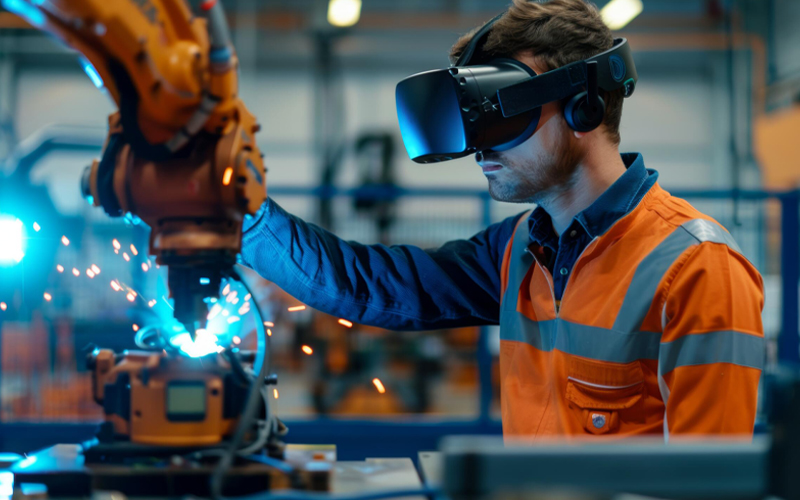Nearly 70 to 80 per cent of total manufacturing is outsourced due to low labour costs, availability of skilled workforce, and digital resonance. But, should you nearshore or offshore your manufacturing?
This article will explain the difference between offshore and nearshore and the pros and cons of each.
What is nearshoring?
Nearshoring or nearshore outsourcing is when you transfer business operations to a country nearby. They have the same time zone and cultural similarity, which helps communication and collaboration. Research from Statista shows that the nearshoring market will grow by 8.9 per cent between 2021 and 2026.
For example, a manufacturing business in the US could nearshore its production to a country in Latin America. Countries like the UK, France, and Germany can nearshore to Eastern Europe. Here are the benefits of nearshoring:
Similar time zones
With similar time zones, you do not have to wait for a resolution to a problem. You can contact your offshore team immediately. You can coordinate product launches on the same date and time.
Similar time zones allow both parties to stay more agile to market changes and pivot production strategies for new opportunities quickly.
Short supply chains
Shorter supply chains can bring in faster, more reliable, and cheaper delivery of goods. You face shorter lead times and lower production costs. The cost of transportation is significantly lower, giving you more options in emergencies or disasters.
Lower language and cultural differences
Similar language and cultural backgrounds can help develop better work coordination and relationship. This simplifies the resolution of issues and decision-making. Due to similar work culture, you also know the offshore team’s work expectations.
Friendly import regulations
While regulations are important, they can make imports difficult if you are offshoring. By nearshoring, you can reduce any tariffs for regulations, better protect intellectual property, and develop product standards.
Challenges of nearshoring in manufacturing
While the benefits may indicate nearshore manufacturing as the best option, you must not overlook its drawbacks.
Higher cost of production
High operational costs could be one of the major disadvantages of nearshoring your manufacturing business. The hourly rate in nearshore countries could be 30 – 50 per cent higher than offshore companies in cheaper countries.
Lower resilience
Resilience is a business’s capacity to recover from natural and man-made disasters, including floods, cyclones, riots, wars, and economic recessions. For example, Mexico, although closer to the US, could have lower resiliency than India.
Fewer service providers
Few nearshore countries with a skilled workforce could drastically reduce your options. For example, Taiwan is a small country but is a global leader in semiconductor production due to its vast investment in R&D and technological expertise. In this case, it makes better sense to offshore.
What is offshoring?
Offshoring is when you onboard a manufacturer from a distant country – commonly from another part of the world. While China continues to be a global leader in manufacturing with 28.7 per cent of the pie, India and other South-East Asian countries are fast catching up. For example, Bangladesh and Vietnam are some of the leading global manufacturers of textiles.
Here are the benefits of offshoring:
Access to new markets
Offshoring gives you access to a vast pool of talent and markets that may have deep domain expertise. In specialised manufacturing, domain knowledge, investment in R&D, and innovation is paramount.
Highly skilled workforce
To counter risks, diversify manufacturing in 2-3 offshore locations, each with many skilled candidates. Most Asian countries, especially India, have candidates proficient in the English language, which takes care of any communication barriers.
Offshoring also gets you a cheaper workforce to do the same work for which you would pay a higher hourly wage locally.
Continuous innovation
Countries with deep domain expertise have already invested heavily in R&D, and it may not be feasible to repeat the cycle. In the example above, Taiwan has years of expertise and investments in semiconductor manufacturing, because of which it remains a high-value offshoring partner globally.
Incentives
Many potential candidates for offshore manufacturing are developing countries looking to improve their economic standing. To attract global business and FOREX, offshore countries offer friendly policies, tax breaks, and other financial incentives.
For example, India’s Special Economic Zones (SEZs) offer benefits such as income tax exemptions and duty-free import of products to overseas clients.
Challenges of offshoring in manufacturing
Even as we’re deep into economies of outsourcing and offshoring, the mechanisms that run these systems are not foolproof. Offshoring cannot be the blanket solution for all businesses due to one of many reasons.
Communication and cultural barriers
Though with remote working technology platforms, one can easily communicate with global teams without travelling, there could be language barriers or a lack of understanding of products specific to a country.
Shipping costs
The large distances between the manufacturers and target markets can mean high shipping costs. There could be other logistical issues, such as delays due to bad weather, legal restrictions, and supply chain disruptions. Such issues could cost the business huge capital or cause delays.
Quality control
Monitoring the quality of products from the other end of the globe can be a big challenge. However, with advancements in robotics, IoT, and ML technologies, the rejection of sub-standard products is significantly lower.
For organisations on the digital transformation journey, agility is key in responding to a rapidly changing technology and business landscape. Now more than ever, it is crucial to deliver and exceed organisational expectations with a robust digital mindset backed by innovation. Enabling businesses to sense, learn, respond, and evolve like living organisms will be imperative for business excellence. A comprehensive yet modular suite of services is doing precisely that. Equipping organisations with intuitive decision-making automatically at scale, actionable insights based on real-time solutions, anytime/anywhere experience, and in-depth data visibility across functions leading to hyper-productivity, Live Enterprise is building connected organisations that are innovating collaboratively for the future.
How can Infosys BPM help?
Infosys BPM is your partner in organisational change with a mandate to transform your business using our digital services. We can help you align with Industry 4.0 standards and prepare for newer technologies, materials, production methods, planning processes, and skill requirements.
Read more about business process in manufacturing industry at Infosys BPM.








